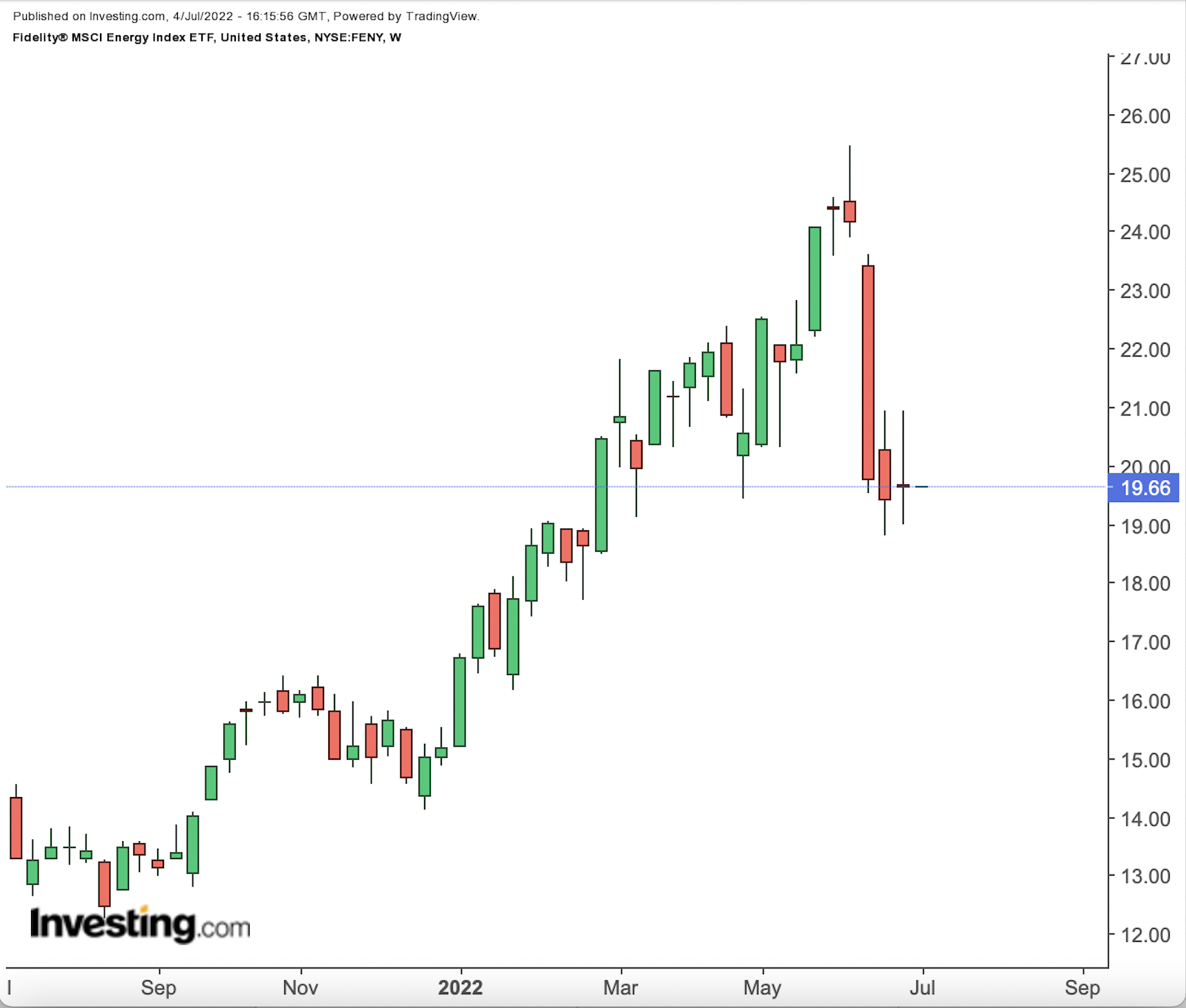Oil and natural gas came under pressure in June while interest rate hikes fueled concerns of an upcoming recession. Uncertainty coupled with profit-taking prompted a wave of selling in a wide range of commodities.
Brent crude oil, a major benchmark price for oil purchases worldwide, dropped around 5% in the past month. Meanwhile, natural gas lost a third of its volume and is now hovering around multi-month lows.
Yet, despite the recent pullback, given growing demand across all sectors, oil and natural gas prices are expected to rise in the coming months. In addition, supply shortages and unexpected disruptions due to increased geopolitical tensions or recurring COVID-19 outbreaks could potentially drive prices higher.
For instance, the decision by Norwegian offshore workers to go on a strike soon is giving support to the price of natural gas. Therefore, potential investors in oil and gas stocks need to keep a close eye on supply and demand imbalances.
According to the U.S. Energy Information Administration, fossil fuels—including petroleum, natural gas, and coal—accounted for more than two-thirds of energy consumption in the U.S in 2021.
“Petroleum has been the most-consumed primary energy source in the United States since surpassing coal in 1950.”
Even though we are seeing a global shift toward alternative energy sources, fossil fuels are likely to stay as the leading energy source for the rest of the decade.
With that information, here are two energy exchange-traded funds (ETFs) to buy after the declines in June.
1. Fidelity MSCI Energy Index ETF
Current Price: $19.66
52-Week Range: $12.26 - $25.47
Dividend Yield: 3.38%
Expense Ratio: 0.08% per year
The Fidelity® MSCI Energy Index ETF (NYSE:FENY) invests in energy names, mostly oil producers. Understandably, these companies see their profits rise when oil prices increase. The fund was first listed in October 2013.

FENY, which tracks MSCI USA IMI Energy Index, currently holds 107 stocks. The leading 10 names comprise around two-thirds of $1.7 billion in net assets. Thus, it is a concentrated fund.
A third of the portfolio is held in Exxon Mobil (NYSE:XOM) and Chevron (NYSE:CVX). Other holdings include ConocoPhillips (NYSE:COP), EOG Resources (NYSE:EOG), Occidental Petroleum (NYSE:OXY) and Pioneer Natural Resources (NYSE:PXD).
So far in 2022, FENY has returned 29.5%, seeing a multi-year high of $25.47 on June 8. But since then, profit-taking has kicked in and FENY has lost more than 22%.
Trailing price-to-earnings (P/E) and price-to-book (P/B) ratios are at 16.39x and 2.61x. With its low annual fee, FENY may appeal to a range of investors who expect the rotation back to oil and gas names, especially XOM and CVX shares.
2. Invesco Dynamic Energy Exploration & Production ETF
Current Price: $26.03
52-Week Range: $14.02 - $36.69
Dividend Yield: 2.22%
Expense Ratio: 0.63% per year
The Invesco Dynamic Energy Exploration & Production ETF (NYSE:PXE) invests in 30 U.S. companies that explore and produce oil and gas. These companies are selected based on a number of criteria, like price and momentum, fundamental value and management action. The fund was first listed in October 2005.

PXE tracks Dynamic Energy Exploration & Production Intellidex Index and is rebalanced quarterly. In terms of sectoral allocations, we see oil and gas exploration and production (72.31%), oil and gas refining and marketing (19.12%), integrated oil and gas (6.01%), and gas utilities (2.57%) among others.
The top 10 stocks comprise close to 45% of the $281.3 million in net assets. Among them are Occidental Petroleum, Diamondback Energy (NASDAQ:FANG), EOG Resources, Valero Energy (NYSE:VLO), Marathon Petroleum (NYSE:MPC) and ConocoPhillips.
PXE is up 35% so far this year and hit a multi-year high in early June. However, since then, it has lost about 28% of its value.
Forward price-to-earnings (P/E) and price-to-book (P/B) ratios stand at 8.02x and 2.15x. We believe the recent decline in price offers a good opportunity for readers looking to invest in commodity-based stocks.
